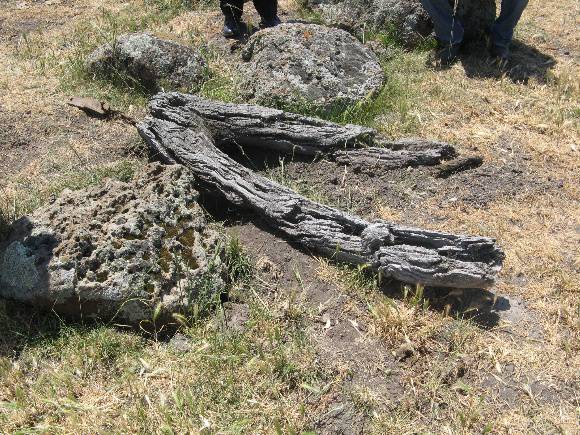| Back to search results » | Back to search page » |
|
HORSE DRAWN STONE-CARRYING SLED
Other NamesCLONARD HOMESTEAD COMPLEX , HORSE SLED , SLED FOR STONES Location275 OHERNS ROAD EPPING, WHITTLESEA CITY
File Number09/005194-01LevelRegistered |
|
Statement of Significance
What is significant?
The horse-drawn stone-carrying sled found at the Clonard farm was probably made and used to transport the stones used in the construction of the boundary walls of the old Maryfield farm, which are thought to have been built c1858. The land was at that time leased by Frederick (Friedrich) Winter and by the terms of his lease with the land-owner Charles Campbell he was obliged to build a substantial wall or fence around the property boundary. At that time labour was cheap, and dry stone walls could be constructed cheaply, and so are common on Victoria's volcanic plains, where suitable stone is in abundant supply. Sleds such as these are known to have been used on farms in Europe and North America, and have been documented in Australia, to drag across the ground stones too heavy for a man to carry. Stones could be levered onto the platform of the sled, and a horse used to pull it. This however is the only known example to survive in Victoria. It is not certain whether it was used in the initial construction of the walls, c1858, or for later repairs or additions. It has for many years lain on the ground near the southern boundary wall of Clonard.
The vernacular sled is made from a sturdy forked tree or branch, with the forks about 20 cm in diameter. Sections have been cut out of the top surface of the two forks to allow boards to be placed across to form a low platform. A metal chain is attached to the other end by which it could be dragged across the ground, probably by a horse. The wood is now very weathered, and one of the forked ends is broken.
How is it significant?
The Clonard sled is of historical and technical significance to the state of Victoria.
Why is it significant?
The sled found at the Clonard farm is of historical and technical significance as the only known example in Victoria of a simple vernacular sled of a type once used to transport large stones used in the construction of the dry stones walls which are common on Victoria's volcanic plains. Such sleds have been documented as having been used in various parts of Australia, but this is the only one known to survive in Victoria. It is a demonstration of the ingenuity of the nineteenth century settlers, in manufacturing simple farm equipment from readily available materials.
Group
Farming and Grazing
Category
Farm Objects (movable)








